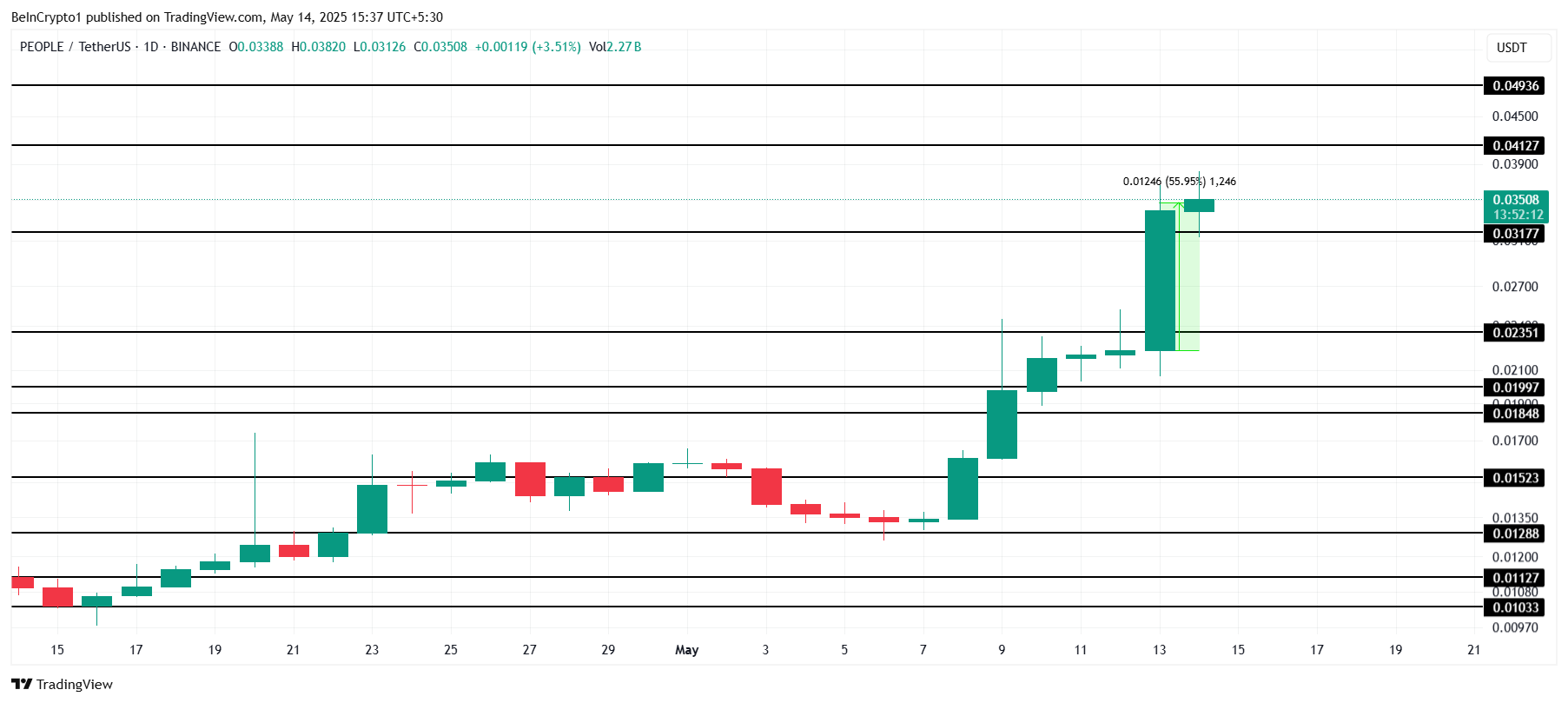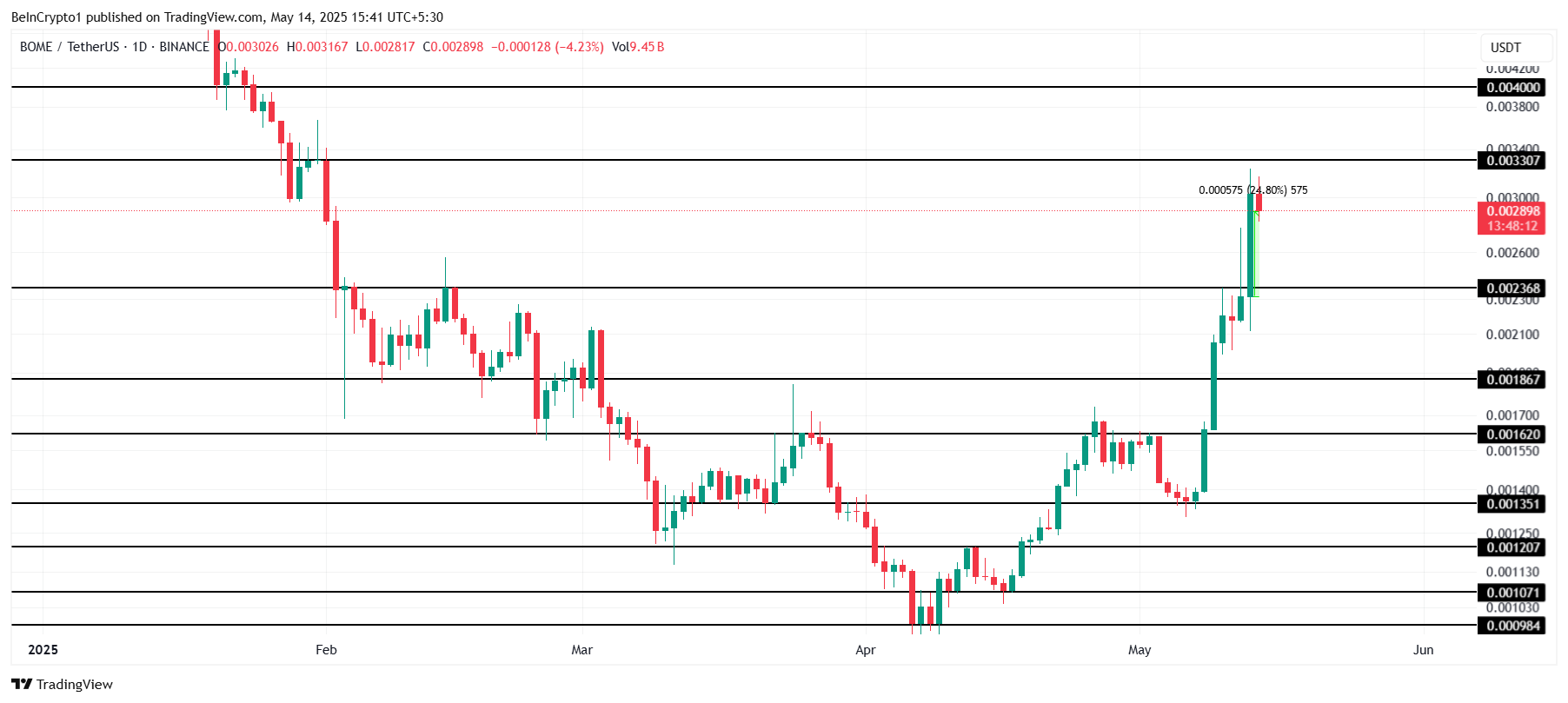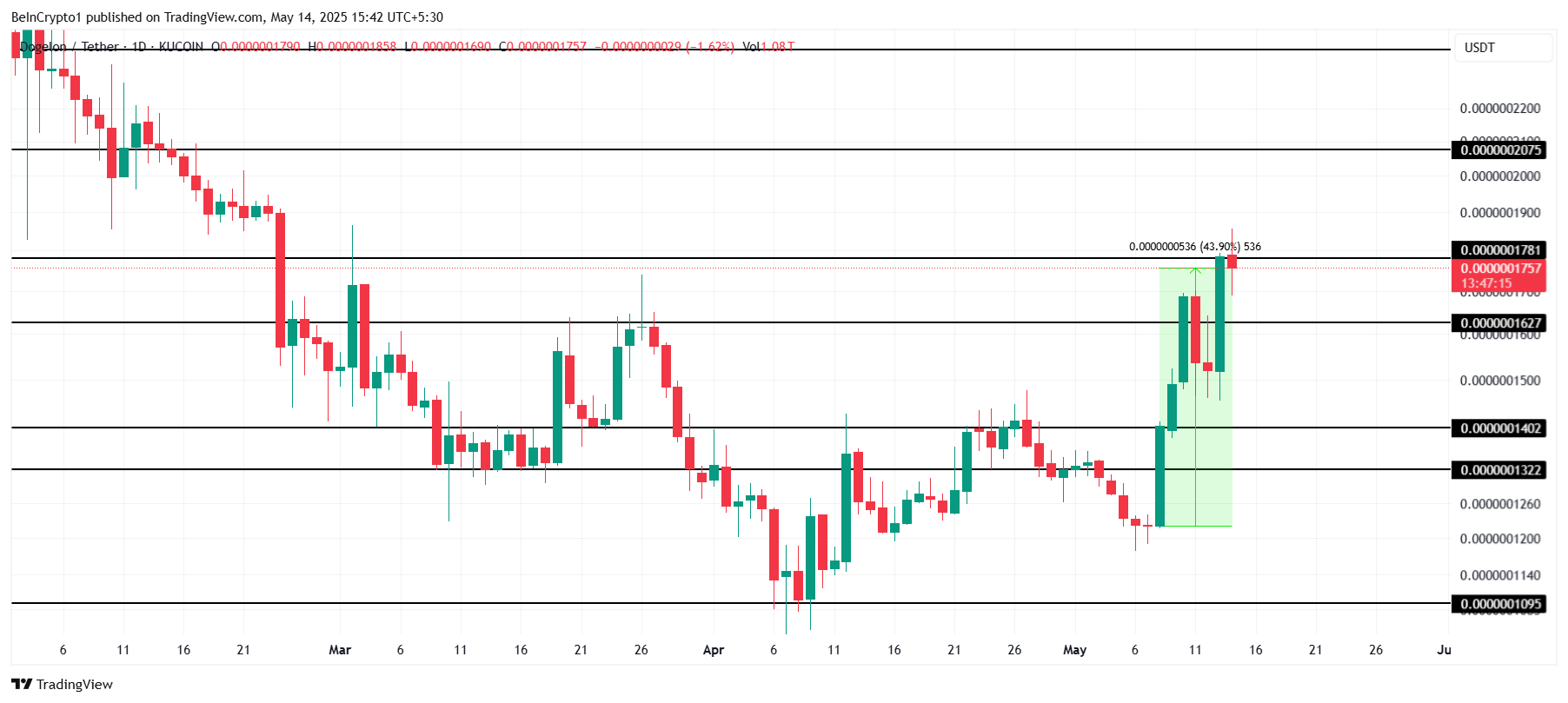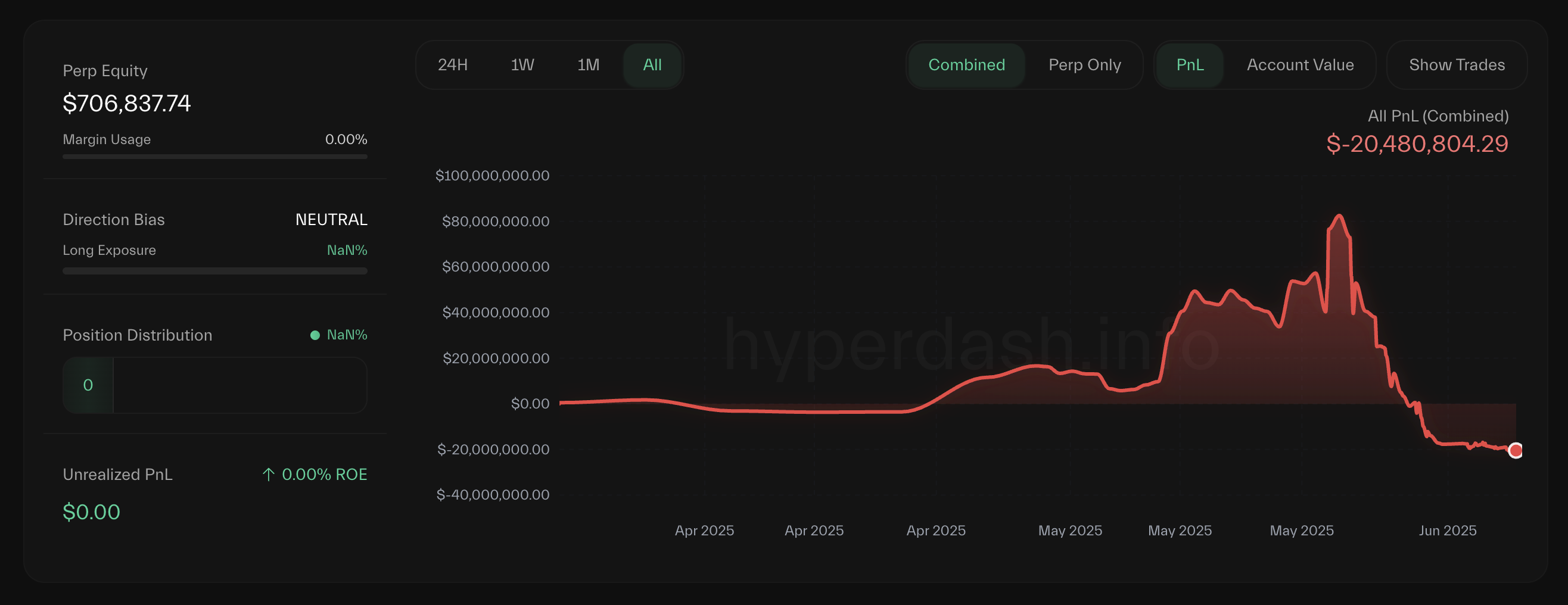Cardano (ADA) has recently shown a modest recovery, riding the wave of broader market bullishness, which has brought its price back above $0.70.
This uptick has sparked renewed optimism among investors, and if the bullish momentum continues, Cardano could see a breakout above $0.80, potentially marking a significant shift in its price trajectory.
Cardano Could End Its Bearishness
Cardano’s technical indicators have recently shown signs of a potential turnaround, especially after a Death Cross formation. Sixteen days ago, the 200-day Exponential Moving Average (EMA) crossed below the 50-day EMA, signaling a bearish trend. This is known as a Death Cross, often seen as a negative signal in technical analysis.
However, the recent recovery above $0.70 and sustained bullish momentum could see ADA rise above $0.80. Should this reversal happen before April begins, it would mark the shortest Death Cross in Cardano’s history. It would be a sharp contrast to the previous 56-day span from March to May 2020.

On the macro level, Cardano’s bullish momentum is supported by a variety of technical indicators, especially the Relative Strength Index (RSI). Currently above the neutral line at 50.0, the RSI is at a 7-week high, signaling growing investor confidence and increasing buying pressure. The RSI’s upward momentum highlights the market’s positive outlook on ADA, suggesting that Cardano is gaining traction after a period of relative stagnation.
With a strong RSI reading, ADA appears to be benefiting from a resurgence of investor interest, which may help sustain the altcoin’s price gains in the short term. If the bullish momentum continues, Cardano could potentially see significant price increases, pushing it toward new resistance levels and offering an opportunity for profitable trades.

ADA Price Needs To Escape This Zone
Cardano’s price is currently trading at $0.70, marking a 13% increase in the last 24 hours. If this bullish trend continues, ADA will likely encounter resistance around $0.77. Historically, the $0.70 to $0.77 range has been a consolidation zone. A successful breach of $0.77 would signal a further move towards $0.85.
A breach of $0.77 would reinforce Cardano’s upward momentum, potentially driving its price even higher. Furthermore, a breakout above $0.80 would suggest that Cardano is ready to resume its longer-term bullish trend.

However, the bullish outlook will be invalidated if Cardano fails to maintain its current price levels. If ADA falls back below $0.70 and slips to $0.63, it could erase the recent gains and lead to further declines. In this case, the positive momentum would be considered short-lived, and the bearish trend could be reinforced.
The post Cardano to Witness the Shortest Death Cross in History as Price Crosses $0.70 appeared first on BeInCrypto.










